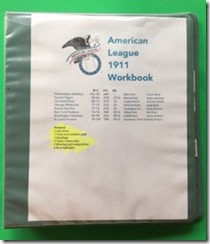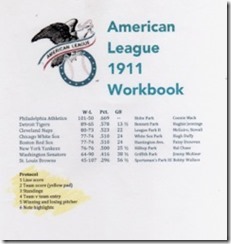 In the past few blogs, we have stress the importance of organizing and maintaining accuracy in recording game scores on a day-by-day basis and keeping one’s standings up to date and accurate. Fall short in either area and count on eventually having to pore through your records trying to accurately put your scores and standings back together.
In the past few blogs, we have stress the importance of organizing and maintaining accuracy in recording game scores on a day-by-day basis and keeping one’s standings up to date and accurate. Fall short in either area and count on eventually having to pore through your records trying to accurately put your scores and standings back together.
One way to ensure that you keep everything organized is to establish a post-game protocol that borders on ritual.
The solution: follow the same procedure, in the same order, after every single game (and series).
While this sounds like borderline obsessive-compulsive disorder, a protocol will provide you a platform that minimizes the possibility of a key record falling through the cracks.
 I keep the protocol written on the cover of a three-ring binder notebook (right, with the protocol highlighted in yellow). This provides an easy-to-follow system that details what to record and in which order. After a while, of course, this becomes automatic, but the protocol is always there dictate what to do and how to do it.
I keep the protocol written on the cover of a three-ring binder notebook (right, with the protocol highlighted in yellow). This provides an easy-to-follow system that details what to record and in which order. After a while, of course, this becomes automatic, but the protocol is always there dictate what to do and how to do it.
Even with this ritualistic approach, there are no guarantees that a score or a key record is accurately recorded. Once in a while one will simply make a mistake (like reversing a score or who won or lost a game). It shouldn’t happen, but it does happen…but if your records are well organized, you will find the error much more quickly and be able to avoid a couple of long evenings poring over notebooks looking for the mistake.
Next: organizing a binder notebook to help you manage your replay




Hey Rod,
While the specifics of my postgame protocol are different than yours since I keep my stats and info in a Excel spreadsheet, the concept is exactly the same.
The idea is that I have a process I follow the same way every postgame and that process allows me to make sure everything “adds up” correctly before I go on to the next game.
Good stuff!
Yes! I find that using the same protocol in the same order–as you have laid out here–is essential. It isn’t obsessive, it’s wise. Just this past week, I gave the loss in a Phillies game to Al Raffo when it should have been Billy Wilson. Thanks to a routine double-check (Yes, I call it the Discount Double Check after that stupid Andre Dawson insurance ad) I caught it almost immediately. There is nothing worse than spending what could be playing time pouring over weeks or months of games trying to find an error like that.
Your entire series of these articles has been more helpful than I can say. Thanks.
PS–If i may, let me throw this question out there to you, or to anyone: with the new card sets that include ALL the players, how do you manage them in a replay? Do you have “minor leaguers” or just let them all play, or what? If you have minor leaguers set aside, would you base it on appearances or ability? Thoughts would be appreciated.
I just started the 2015 season with the XB. I doubt I will actually use all the players, as there are some that just came in for one game as a pinch runner.
I ensure I don’t just the J-4’s until late in the season when teams have pretty much been eliminated. Even then there are so many on some teams you can barely get them in the envelope.
I just finished the 1902 season with XB, and even with the somewhat smaller rosters there were a fair amount of players that saw not even one appearance.
My own personal recommendation is put the players you want to limit in the back of the envelope or perhaps mark your spreadsheet with a games limit on it. I am sure there are others with better suggestions though.